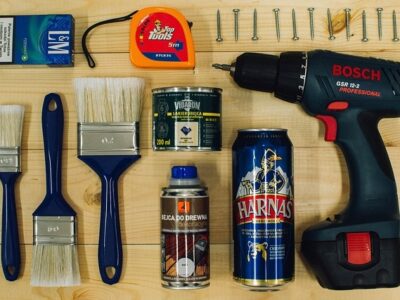Mold is a kind of fungus with a fuzzy look. There are thousands of different species of it. Most require darkness and moisture to grow and spread. If you live in a very damp and humid environment, then chances are there is mold growing in the corners of your house.
If you ever mold around your house, it is best if you call the professionals for help. Simply cleaning is not a solution. While you may easily clear out the mold, something you can’t easily see is the spores that have already been released. These spores when inhaled pose a risk to your family’s health and well-being, and they may regrow. So professional help is always the wisest and safest option for you to take.
Things To Consider To Find Out If There’s Mold In Your Home
Here are 11 signs that may indicate possible mold growth around your house:
1. Noticing Fuzz in Walls and Floors
If you ever see any sort of fuzz or fuzzy stuff on your walls or floors that is not just dust, chances are it is mold forming on your walls. It can be of many colors ranging from black and white to green. It will form in small spots and later become bigger.
2. A Musty and Foul Smell
When mold starts growing around your house, it will release a very musty and foul odor, which will start slowly and get more intense over time. If you have started to notice this kind of smell, you can be sure that mold and fungus are the culprits.
3. Weird Smells from the AC/Heating
Mold can grow inside electrical equipment as well. Condensation may occur, and mold can easily start growing inside machinery. And when it does, it will start releasing bad odors which get worse over time.
Check for any smell coming from your AC or heating vents. If it isn’t coming from anywhere else, then chances are there is a mold outbreak inside the AC or furnace.
If you are unsure about doing it yourself, you can always reach out to an air conditioning repair contractor for professional help.
4. Coughing and Sneezing
If you seem to have caught a bad case of coughing and sneezing without any symptoms of a cold or allergic reaction, chances are it is because of mold growth. Mold often makes us cough and sneeze uncontrollably. The spores it releases into the surroundings when inhaled cause irritation, which results in dry coughs and frequent sneezing.
5. Irritated and Itchy Skin
Skin irritation can also be a foreshadowing of mold growth. Our skin is our biggest organ. It covers our entire body and is very sensitive. So when it gets exposed to things like dirt, mold, dust, pollen, spores, etc., it can flare up. This flaring is often followed by bumps and rashes and red patches. It may even burn lightly and start itching. So it’s best to consult your skincare specialist asap.
6. Darkened Grout
Grout is a mixture of cement, sand, and other binders that is applied in between tiles. Yes, those lines between tiles in your bathroom or kitchen area are all grout.
That is because most places where tiles are used are near water or have high amounts of moisture. And as we all know, moisture invites mold growth, so as the grout gradually becomes darker, it’s not always because of dirt.
7. Peeling Wallpaper
To be clear, if your wallpaper starts peeling off, you should be worried. When there is mold growth in your walls, it will cause your wallpaper to start peeling off. Moreover, when mold starts growing in your walls, it will slowly cause your wallpaper to bubble up and become discolored.
8. Discoloration on Walls
Whenever mold starts growing, it starts in small clusters which eventually get bigger and spread farther and farther. You will notice dark marks and spots on the walls, and with time these spots and marks start becoming bigger as well.
9. Damp Spots
Whenever there is any sort of moist spots on the walls, around your kitchen or bathroom, or even your basement, they are big red flags!! They can not only mean potential mold outbreak, but also severe property damage.
10. Pipe System Leaks
If you notice any sort of leaks, for instance from the water supply or even drainage pipes, plumbing systems, etc. Any sort of excess moisture or water results in mold and fungus growth. They should be fixed and dealt with asap as it will not only cause mold growth but eventually massive and expensive property damage.
11. Itchy Clothes
If your clothes suddenly start itching, then chances are there is a mold outbreak. Carefully observe your clothes; there may even be mold growing on them. Notice mold spots on your clothes, closets, and laundry room. You should get rid of the mold and then deep clean your clothes.
If you see any of these signs, then immediately call for professional help. Simply removing and cleaning the mold is often not enough. Professional help is needed to ensure they never re-emerge.
To Conclude
Mold may seem insignificant, but it needs to be dealt with and prevented from growing. Long-term exposure to mold results in a weaker immune system and causes you to develop diseases like asthma, breathing problems, etc. Besides these, chronic fatigue, allergy, headaches, and migraines are also results of exposure to mold.
So it is better to take precautions before the signs of mold in your home start to appear. It’s always better to be safe than sorry.




















